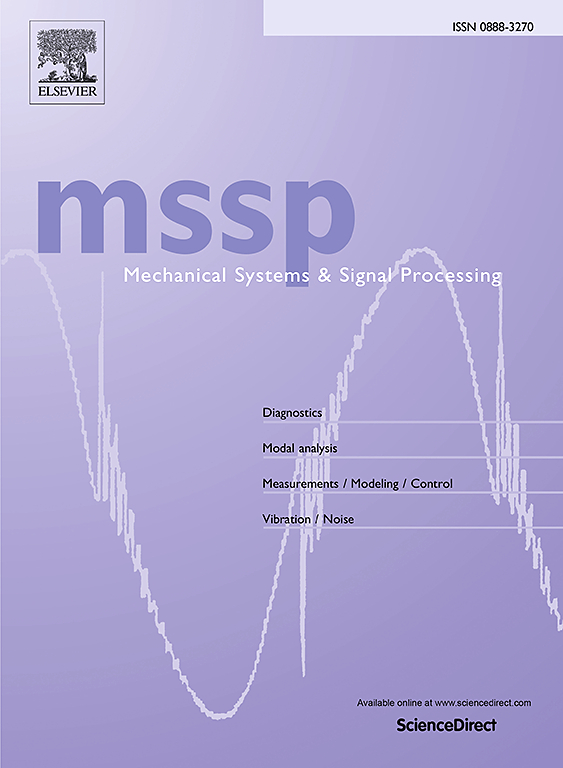A joint sparse representation-based approach for anomaly rectification in extended-duration SHM systems with sensor networks
IF 7.9
1区 工程技术
Q1 ENGINEERING, MECHANICAL
引用次数: 0
Abstract
In modern structural health monitoring (SHM) systems, the reliability of sensor networks plays a critical role in ensuring accurate defect detection and preventing potential failures in complex industrial applications. Sensor network-based SHM systems often suffer from challenges of transducer inconsistency and nonuniform degradation in extended-duration monitoring, leading to reduced detection accuracy and compromised system durability. This study proposes a framework that enhances system-level reliability by integrating Joint Sparse Representation (JSR) which propels outlier recognition and Distributed Compressed Sensing (DCS) which facilitates real-time signal reconstruction. By identifying abnormal sensors and reconstructing their signals, the framework improves inspection quality while restoring the functionality of the entire sensor network, which ensures the theoretical inspection accuracy and minimizes the risk of SHM system failure due to transducer degradation and inconsistency. Experimental results show that the proposed method achieves an average F1-score improvement of 40.3 % (from 0.45 to 0.63) in defect detection and enhances signal-to-noise ratio (SNR) by up to 20.1 dB compared to the raw signal from inconsistent sensor networks. Whereas the cases studied are specific to ultrasonic guided wave SHM system, the proposed strategy is generic in systems with sensor networks. This framework contributes to more durable and reliable SHM practices by mitigating the risks of undetected defects and enhancing system reliability.
求助全文
约1分钟内获得全文
求助全文
来源期刊

Mechanical Systems and Signal Processing
工程技术-工程:机械
CiteScore
14.80
自引率
13.10%
发文量
1183
审稿时长
5.4 months
期刊介绍:
Journal Name: Mechanical Systems and Signal Processing (MSSP)
Interdisciplinary Focus:
Mechanical, Aerospace, and Civil Engineering
Purpose:Reporting scientific advancements of the highest quality
Arising from new techniques in sensing, instrumentation, signal processing, modelling, and control of dynamic systems
 求助内容:
求助内容: 应助结果提醒方式:
应助结果提醒方式:


